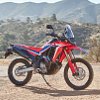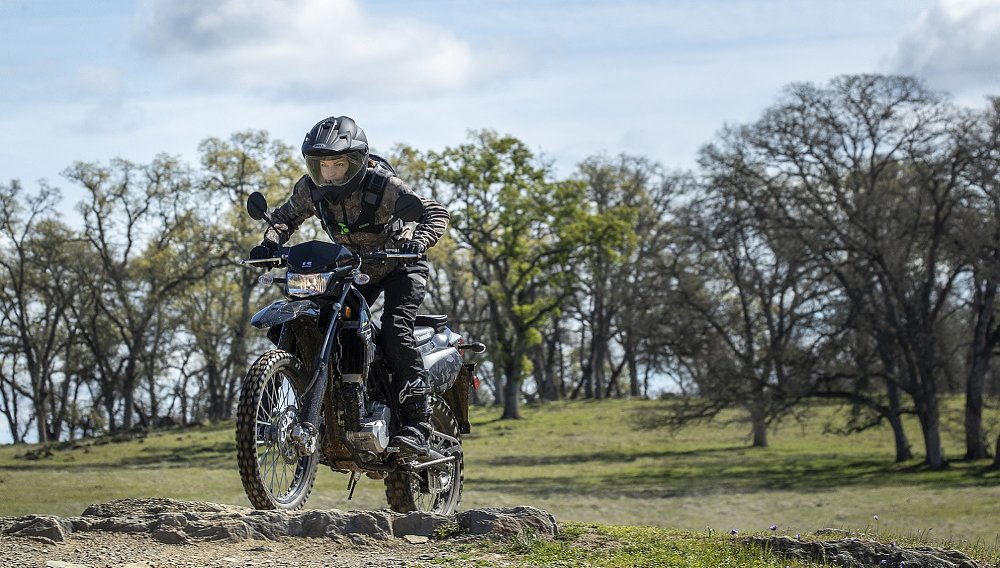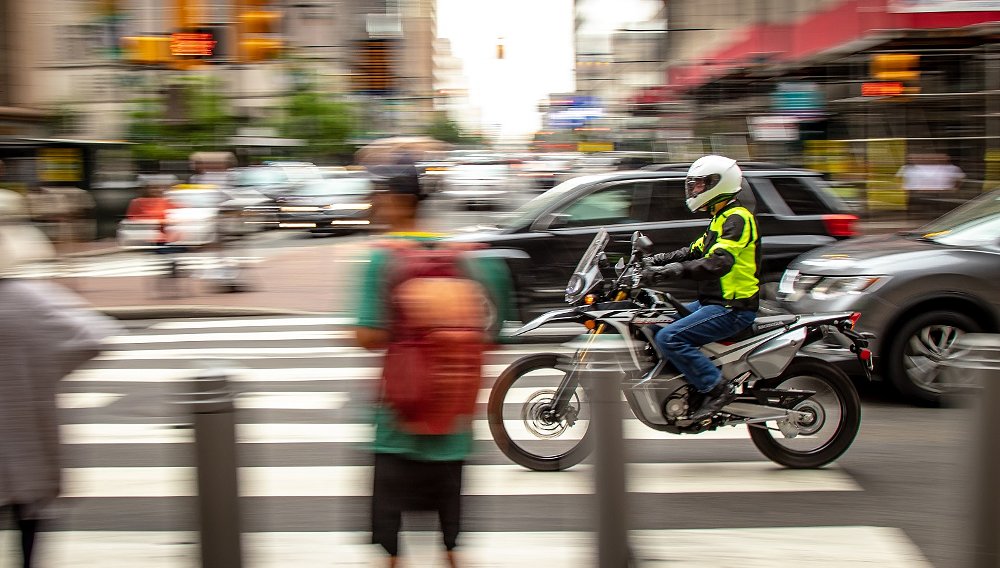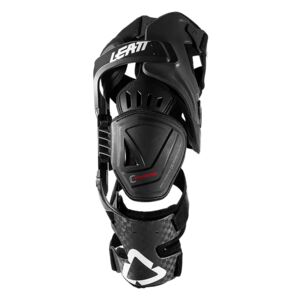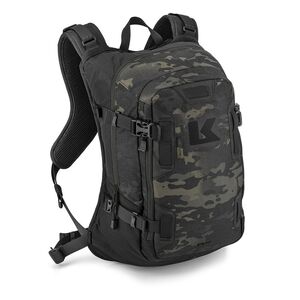Dual-sports are the ultimate exercise in the art of compromise.
The requirements of a good street bike and the requirements of a good dirt bike are often in direct conflict. The better you make a machine at one thing, the worse it gets at the other. So, the question of a “perfect” dual-sport comes almost entirely down to rider preference. Are you looking for a dirt bike that can occasionally go on the street? Or a street bike that can occasionally go in the dirt? Ask 10 riders and you’re likely to get 10 different dirt-street percentages. Ask Honda, and they’ll probably tell you the answer is a 2021 CRF300L.
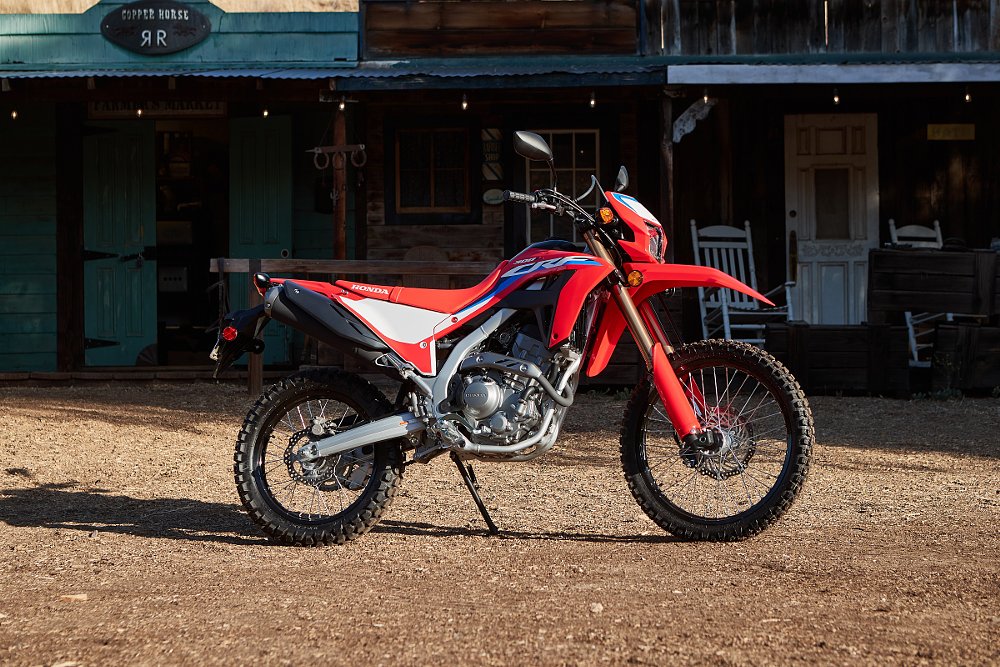
To Honda’s credit, the new CRF300L is bred from successful stock. Its predecessor, the CRF250L, was introduced in 2013 and over the years has become Honda’s number-one-selling dual-sport model; 35,000 units sold, so they say. But with great sales figures come great quibbles, and just about everyone who has ridden a CRF250L has complained about the lack of power.
So, to the delight of many and the surprise of few, Honda finally answered the call. With a bigger engine poached from the CBR300R, some upgrades to the suspension, transmission, ergos, and dash, and a price that’s very reasonable by 2021 standards, the new CRF brings with it an impressive resume. Perhaps, you’re starting to think the answer is a CRF300L.
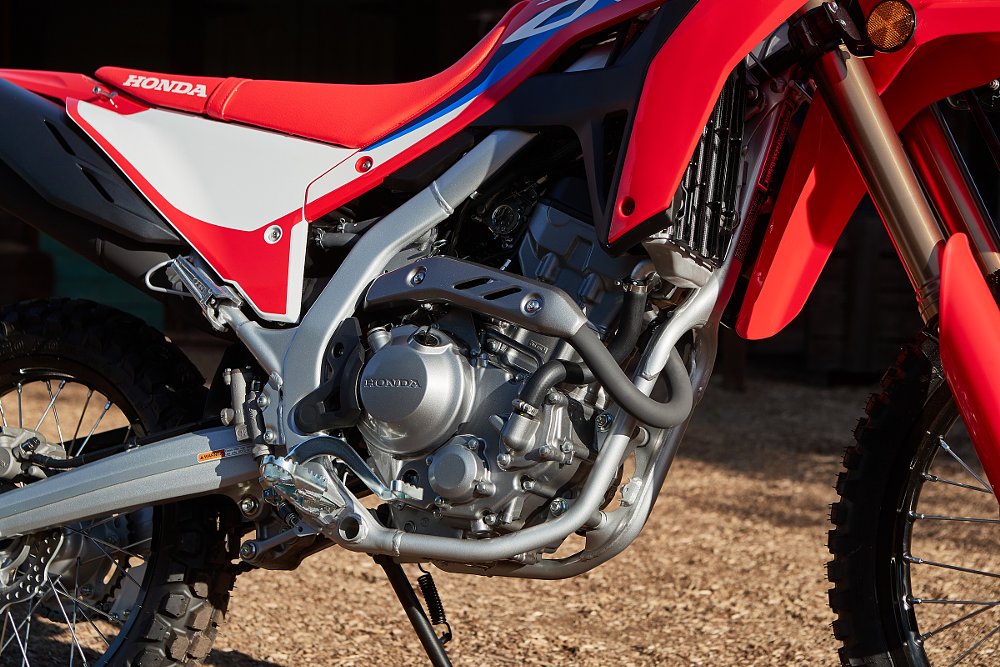
What’s new for 2021
This past week, Honda invited us out for a day of riding around the Rowher Flat OHV area near Santa Clarita, California. To my surprise, it was not a particularly tame day of riding. Other than a break for lunch or the occasional photo stop, we strung together asphalt, fire roads, and single-track until the sun started to get low in the sky. But before we got to the business of testing the new bikes, we received a full rundown of all the model changes for 2021. And the rundown wasn’t short.
There is, of course, the aforementioned new engine, bumped from 249 cc to 286 cc, thanks to an extra eight mm of piston stroke. The liquid-cooled, single-cylinder stump also received revised cam timing, said to increase low- and mid-range grunt. All together, Honda is claiming a 10 percent increase in power and an 18 percent increase in torque. They didn’t cite exact numbers for us, but based on the CBR300R’s well documented figures, it’s safe to ballpark about 27 horsepower and 19 foot-pounds of torque.
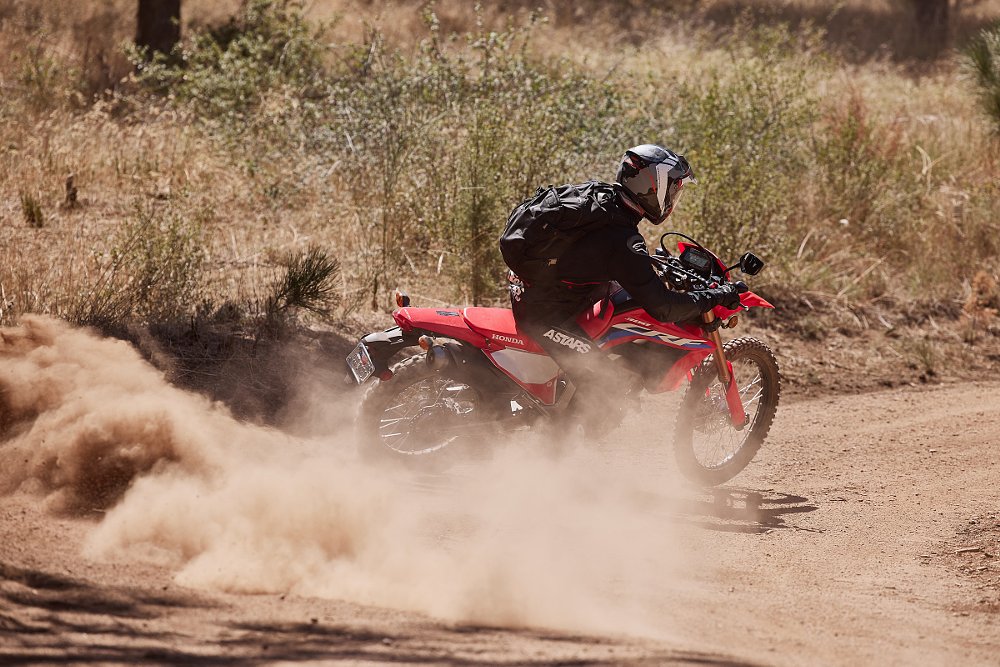
But it’s the updates beyond the engine I find particularly exciting. There’s a new frame (lighter and more flexible), a new dash (now including a gear indicator), a new slip/assist clutch (20 percent lighter pull), and added suspension stroke (about 0.5 inches front and rear). Impressively, they were also able to add 1.2 inches of additional ground clearance (now 11.2 inches) while only increasing the seat height by 0.3 inches (now 34.7 inches).
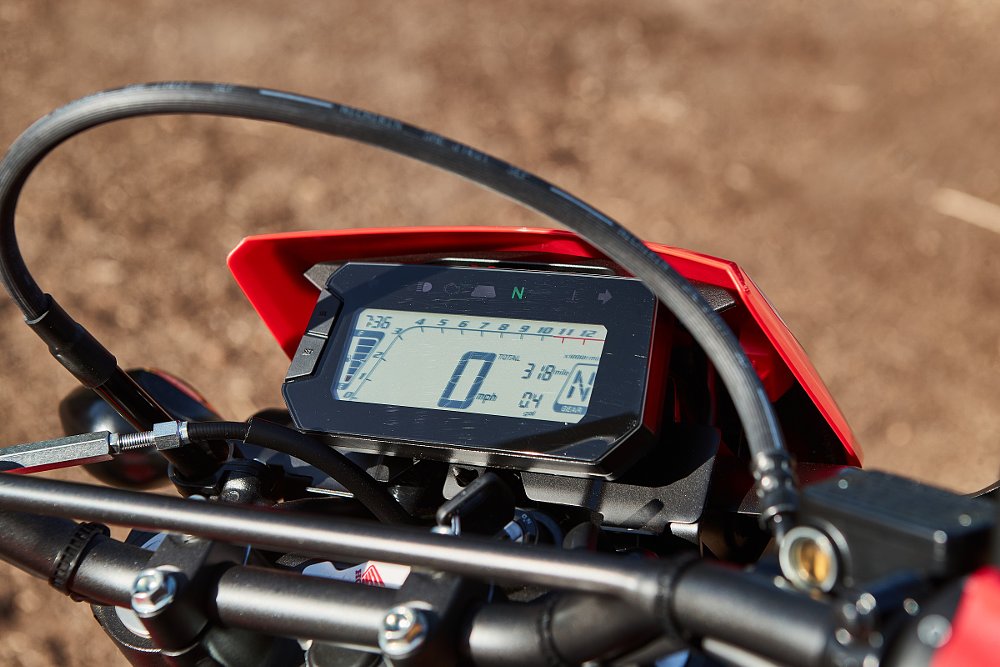
What’s more, or perhaps less, is the weight savings. The 300L dropped 11 pounds from its predecessor thanks to an ounce-by-ounce diet on everything from the dash, swingarm, axle, frame, triple clamp, exhaust, and so on. Fully fueled, Honda is claiming the bike weighs 309 pounds, plus a couple pounds more for the ABS version. It may not be as feathery as something orange or white from Mattighofen, but it’s not a bad figure for the steel-framed world of dual-sports.
The other pleasant surprise is the updated transmission ratios. Honda says they geared first through fifth closer together, with sixth getting a wider ratio than before. This means the top gear now acts as an overdrive, helping to ease the strain of street speeds on the still-diminutive motorcycle.
All this, plus a few other small changes, and the 2021 CRF300L rings in at $5,249 — just $50 more than the sticker on a 2020 CRF250L. The ABS model will set you back another $300, but even then, it seems a fair ransom to ask given all the new hardware.
Of course, out in the real world, the practical value of those updates is a little more complicated.
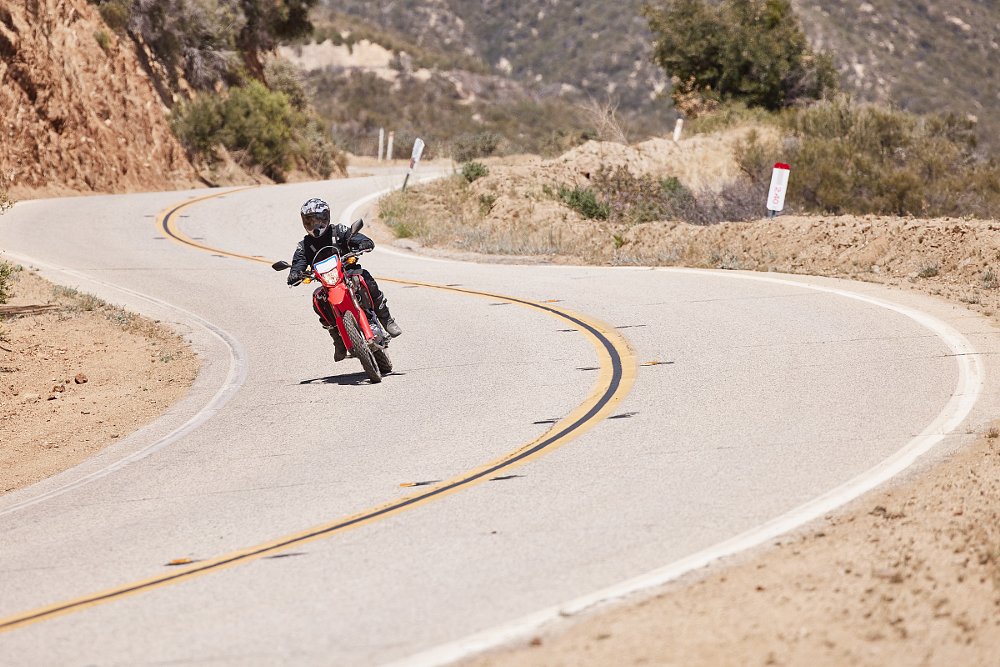
CRF300L street performance
The CRF300L is a better street bike than the 250L. Full stop. Winding through the asphalt rivulets of Santa Clarita, the new engine immediately paid dividends with improved acceleration and comfort at cruising speed. Make no mistake, this bike is not fast. It can still be stymied by a steep hill, strong headwind, and probably a big breakfast. It’s also unlikely to win any drag races unless the other person is on a lawn mower. (Even then, you never know.) But it is unquestionably faster than the 250L, which is what most people were hoping to hear. It cruises right up to 65 mph without needing a mile-long runway and holds there at 6,500 rpm with minimal vibration. Push the bike beyond 70 mph and you do start to feel a buzz reverberate through the chassis, but even then it’s negligible and among the smoothest bikes offered in this class.
The new dash is also a standout feature. It’s bright, uses a large font that is easy to read, and best of all, it still has a fuel gauge and now adds a gear position indicator. I know that hardcore enduro guys are too tough to care about creature comforts like remaining-fuel-level and current-gear-being-used, but for us lesser folk who are accustomed to such conveniences, it’s hard not to appreciate their inclusion on the new model. The dash layout is simple, with just two buttons to either toggle information or reset your trip, and even while standing I found it relatively easy to glance down and absorb information about my speed, mileage, fuel, and gear.
That’s not to say that the 300L is without its flaws on the tarmac. For my six-foot frame and lanky legs, I found the pegs a little too close to the seat for all-day comfort. And the seat itself? Also not the best for all-day comfort. It’s pretty firm, pretty skinny, and although it’s better than most dirt bike seats, it’ll still leave you with some tender flesh on the exterior of your posterior. If street comfort is a priority for you, then the CRF300L Rally is far and away the better option — but more on that a minute.
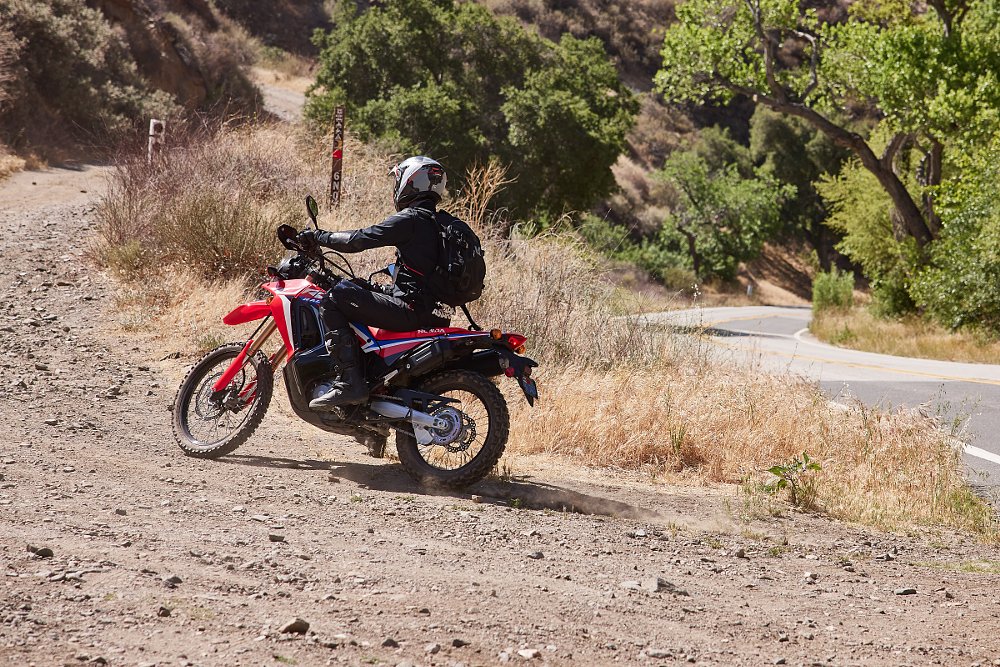
Regardless of which model you choose, the brakes (especially the front brake) are extremely dull. There’s very little bite, minimal feedback, and it feels like the pudding-soft fork dives as soon as you think about touching the brake lever. It’s possible Honda tuned the brakes to be more forgiving for off-road riding, where overzealous lever pulls are a quick way to end up on the ground, but best intentions aside, the brakes do not inspire confidence while riding on the street. I’d advise anyone buying the bike to practice some emergency braking in a parking lot to understand just how hard you have to squeeze and how slowly you slow down.
Brakes and seat aside, the CRF300L is a fun, eager little machine that is totally acceptable as a street bike. The new model benefits greatly from the added power, flicks nimbly through a set of curves, and sips fuel at an exceedingly polite 65 to 70 mpg. The fact that you can get it with ABS (which can also be disabled) is an added bonus in the field of affordable dual-sports.
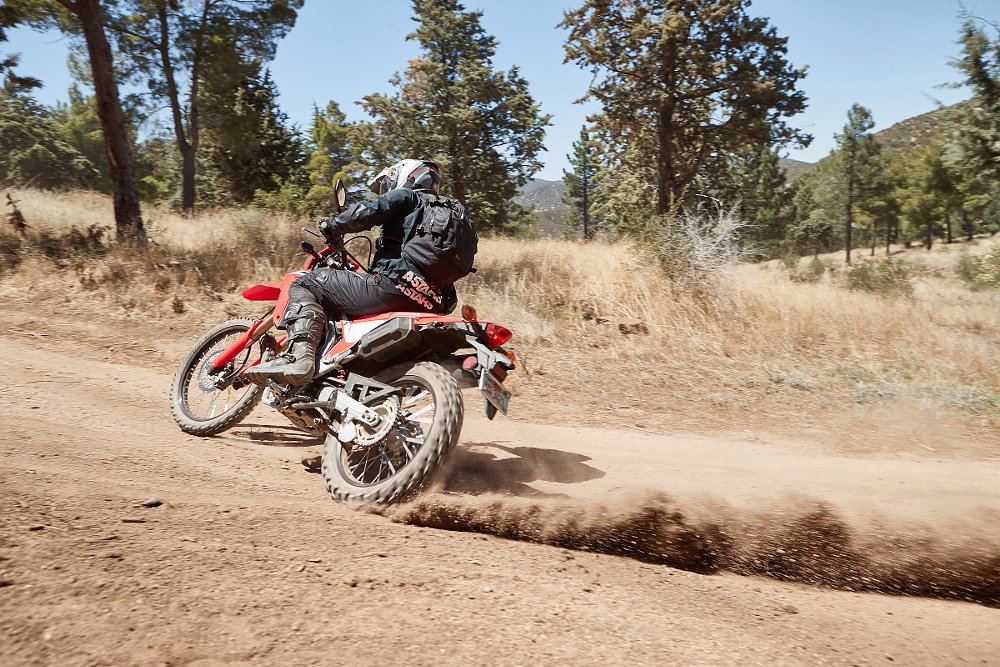
CRF300L dirt performance
Based on looks alone, it’s clear the CRF is more dirt bike than street bike. And Honda told us right out of the gate that the goal for the new 300L was to improve its off-road capability from the 250L. In that they succeeded.
The most obvious improvement in the dirt comes from the new engine. If you’re used to the world of super-sized ADVs then you might see a number like 286 cc or 27 horsepower and laugh. But you probably won’t be laughing when a little CRF blows by you as soon as the terrain gets loose or the trail gets technical. Most of the off-road riding we did stayed around 20 to 40 mph and the spunky engine made more than enough power to slide around corners and climb over hills. I was especially pleased that the extra power meant I didn’t have to shift as much as I did on the old bike. Where the 250L needed to be revved out, but not revved out too much, the 300L is broadly tractable. Fire road or single-track, uphill or down, the machine was happy to stay in second or third gear to get the job done. We didn’t tackle any sand washes or truly steep ascents, but considering that the bike is an entry-level dual-sport, I don’t think the engine will be the limiting factor in its off-road adventures.
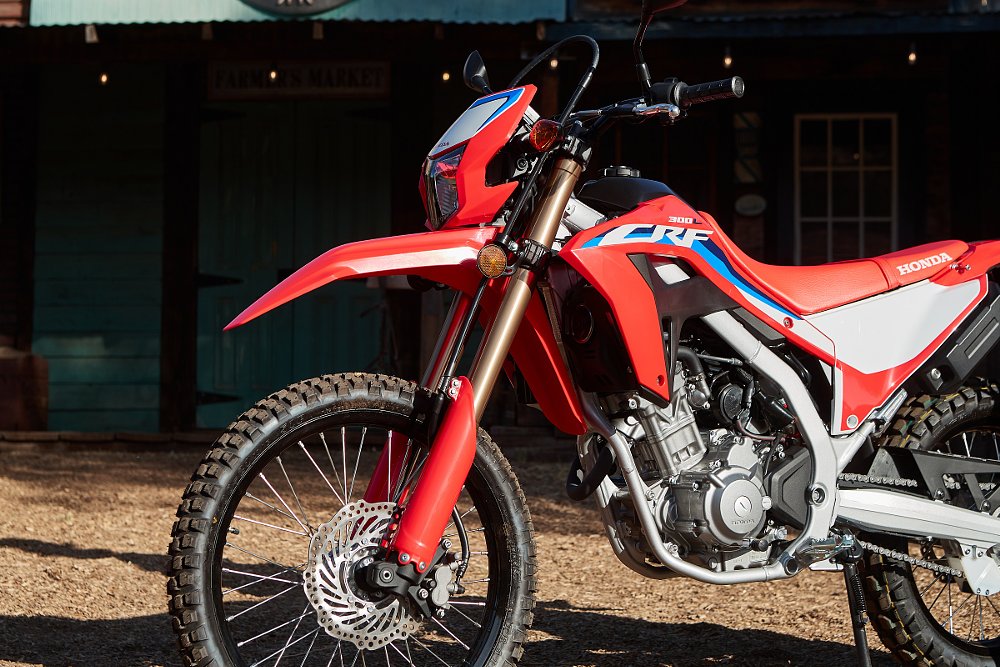
What remains a limiting factor is the suspension. Yes, there’s more of it now. But the biggest issues with the 250L’s suspension, in my experience, were the spring rates and damping, not necessarily the length. And those issues persist on the 300L. The front end tends to deflect, rather than absorb, and the rear end has a bad habit of bucking when it hits any hard-edged obstacles. I never actually bottomed out the new bike, which is certainly an improvement, thanks to the longer springs, but considering I only weigh about 160 pounds I wouldn’t be surprised if heavier riders found themselves encountering the end of the stroke.
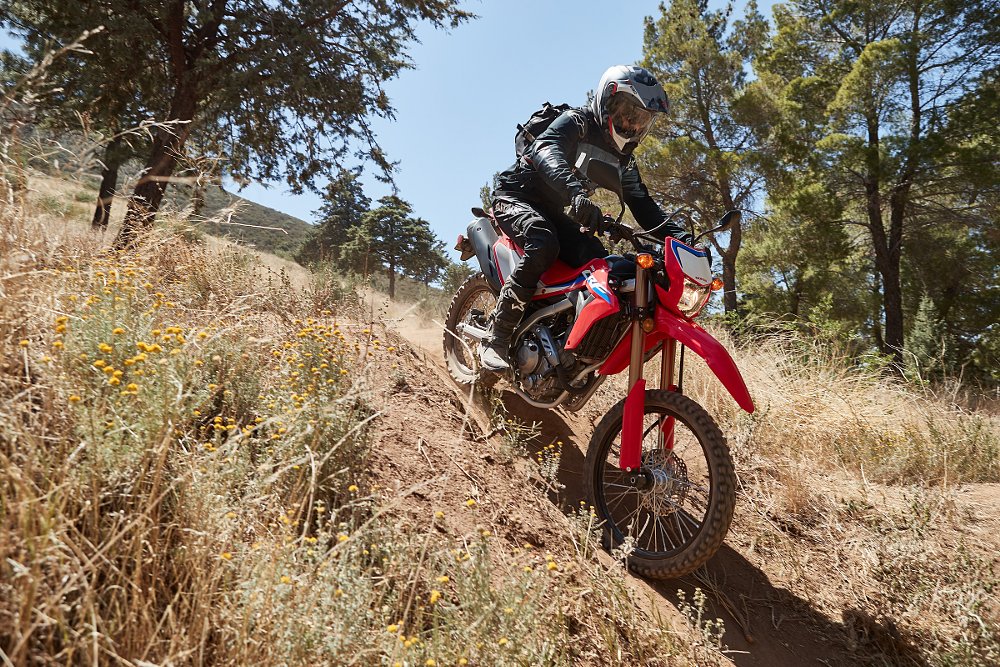
But here’s where things get tricky. Other than the suspension, the CRF300L is a delightful bike to ride off-road. It feels narrow and light, especially over rough terrain. The engine, transmission, and clutch work very well. And once I learned how the suspension was going to react, I had no issues adjusting my line choice, speed, and body position to get through obstacles without losing my balance or upsetting the chassis. I genuinely had fun riding it around in the dirt and I think it’s a great option for people who are either new to the sport or don’t have hard-enduro expectations from a $5,300, street-legal dirt bike.
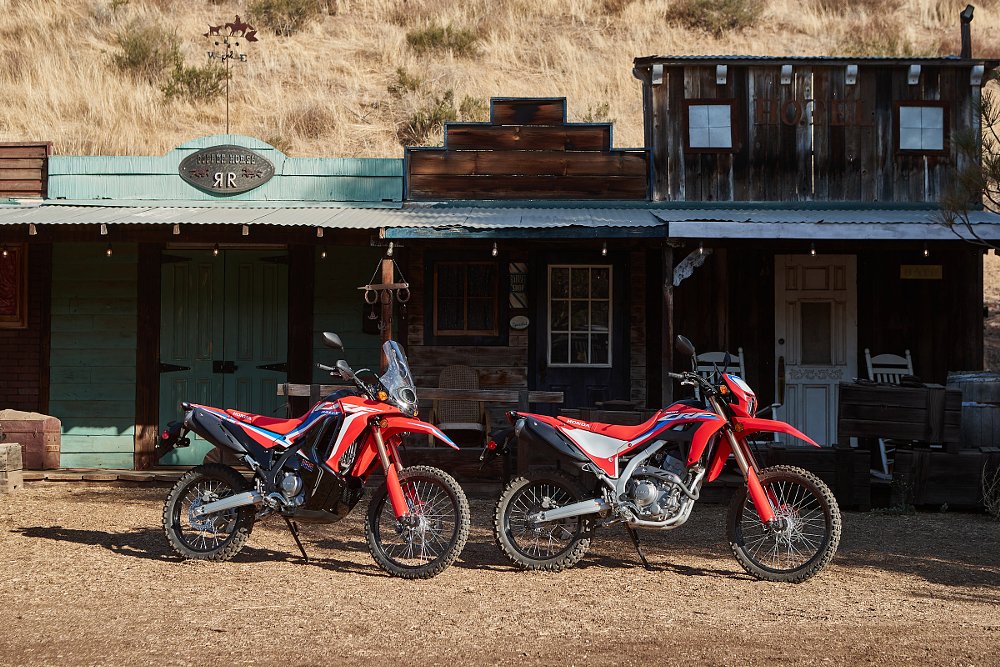
CRF300L versus CRF300L Rally
I spent half the day riding the CRF300L and the other half riding its up-spec sibling, the CRF300L Rally. For the sake of brevity, I can tell you the Rally is yet another victim of the dual-sport compromise — a better street bike but a worse dirt bike. For the sake of clarity, here’s how the two models differ.
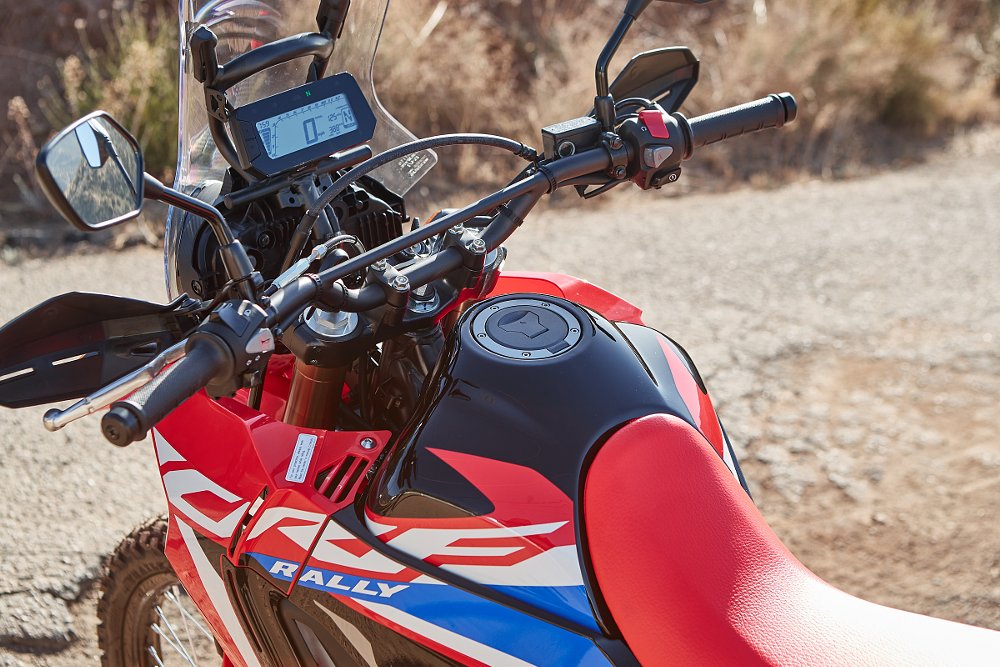
The CRF’s Dakar-inspired variant will set you back $6,000 ($6,300 for ABS). Compared to the 300L, it has a windshield, a larger fuel tank (3.4 gallons versus 2.1 gallons), a slightly larger front brake (296 mm versus 256 mm), handlebar weights, rubber footpeg inserts, and a thicker, wider, rubber-mounted seat. I was told the Rally’s suspension is slightly different, using a longer spring in the fork, but the suspension travel is identical and the ground clearance is actually a little bit less (10.9 inches vs. 11.2 inches). The seat height of the Rally is a smidge taller (35.2 inches vs. 34.7 inches) but it seems that’s due to the added seat cushion rather than suspension. All of those accoutrements will weigh you down an additional 24 pounds over the 300L — that’s 333 pounds for the non-ABS version Rally. Oddly, the ABS version is said to add an extra four pounds, as opposed to an extra two pounds on the standard 300L. I asked Honda for an explanation but they didn’t have a clear answer and said they’d look into it. A difference of two pounds really doesn’t matter for a bike like this, but color me curious.
Add up these differences and it’s no surprise that the Rally is a better street bike than the 300L. It’s incredibly smooth, thanks to the extra rubber bits and bar mounts, is far more comfortable due to the windshield and larger seat, and the extra fuel capacity means that 200-plus miles between gas stops is no problem. The flip side is quite simply that the added weight magnifies the shortcomings of the suspension. I did bottom out the Rally a couple times. It wallows, it dives, it bucks. And the wider gas tank (plus extra fuel) makes the bike a little less agile on tight, off-road terrain.
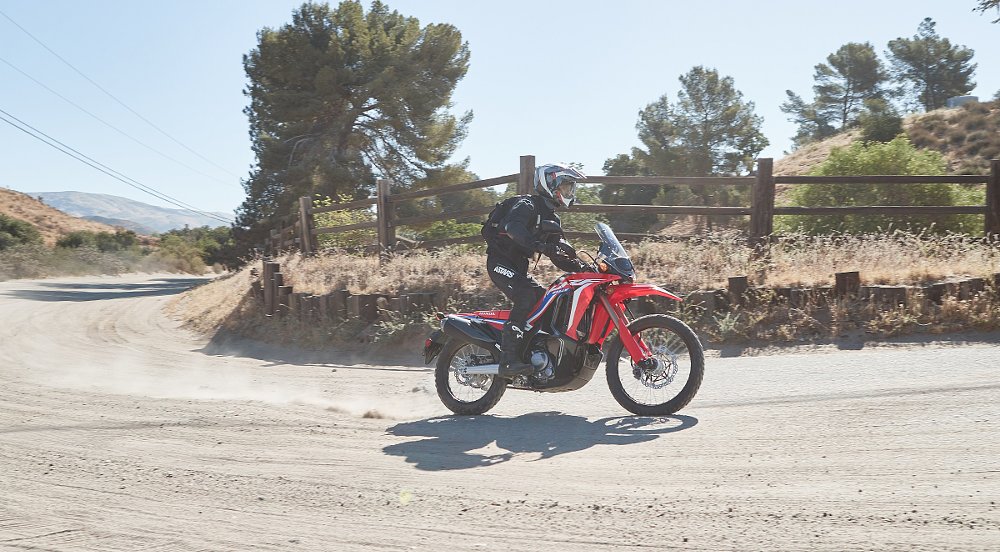
I found myself disappointed with the Rally. On paper, I love the concept. It looks great and offers a blend of features that suggest it prioritizes dirt and street performance in equal measure. A true dual-sport. But the compromised suspension is Kryptonite for someone of my size and riding skill. And, sure, I could spend $1,000 to modify the suspension and potentially have a pretty amazing do-everything motorcycle. But by the time you break into the $7000 price range, there’s a lot more competition. You can get more street comfort and fuel capacity with something like the Kawasaki Versys 300-X or Honda CB500X. You can get more dirt performance with something like the Suzuki DR650S. Not to mention an even wider array of options if you tap into the used market.
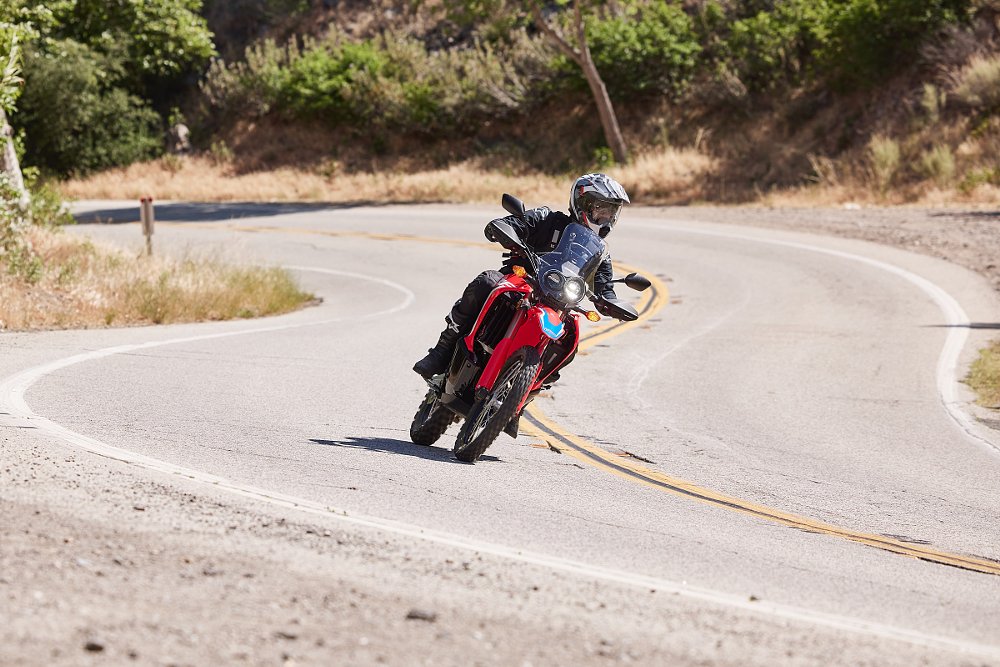
If Honda ever upgrades the suspension on the Rally I would seriously consider buying one myself. And maybe that’s why I’m particularly disappointed. This bike is so close to what I want. I live about 60 miles from the nearest OHV park, hate hauling bikes in a truck, but also like being comfortable on the freeway and enjoy exploring single-track off the beaten path. Nothing stings so achingly as missing greatness by an inch.
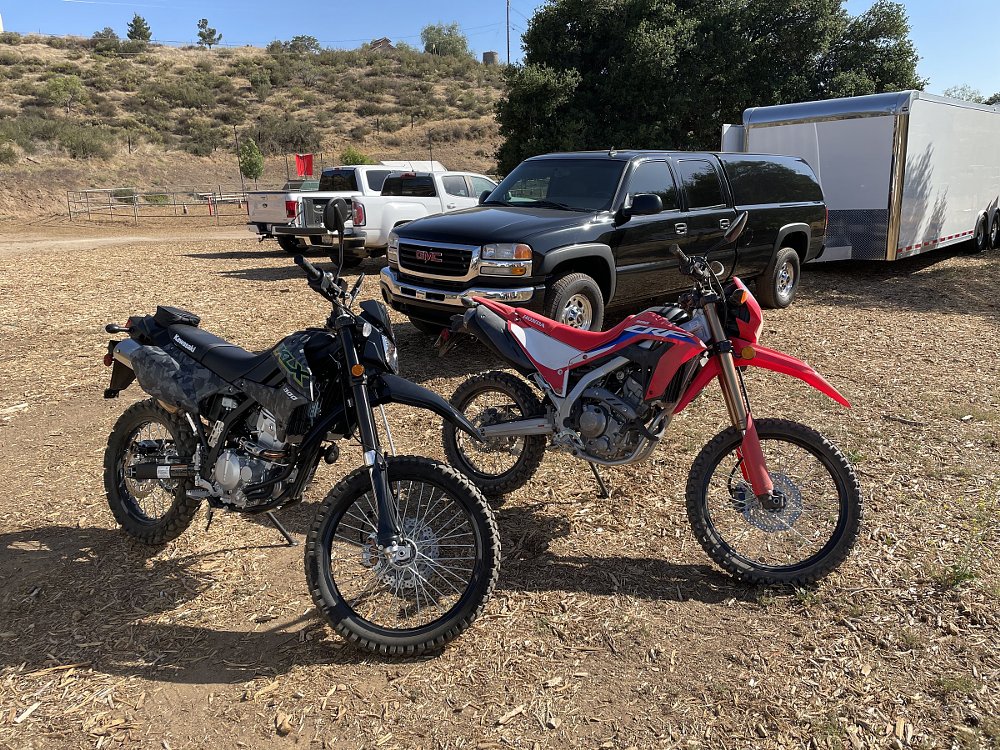
Honda CRF300L versus Kawasaki KLX300
A lot of people are going to ask how the CRF300L compares to Kawasaki’s new KLX300. We haven’t conducted a proper comparison, but I have spent a bit of time on the KLX. In fact, I rode it to and from the press launch of the CRF (about 140 miles) and bopped it around some of the same dirt roads on my way home.
Very briefly, the KLX is a better dirt bike by a little bit and a worse street bike by a lot of bit. Surprise, surprise, the suspension on the KLX is great. It actually has less travel than the CRF but it’s more adjustable and the damping is much better. Overall, it’s just more controlled, predictable, and forgiving. It also feels like the KLX engine is a bit snappier and the brakes are a touch sharper. However, the KLX is a pretty mediocre street bike. It’s buzzy enough that my hands were numb by the time I got to the press launch, isn’t offered with an ABS option, doesn’t have a fuel gauge or gear position indicator, and generally felt less comfortable than the 300L out on the road. Plus, it’s more expensive.
If you want to read more about the KLX you can check out Jen’s first ride review, but my take is that it’s a good bike for more advanced off-road riders or riders who just plan to do the vast majority of their riding in the dirt. Anyone else, you’ll probably want the CRF.
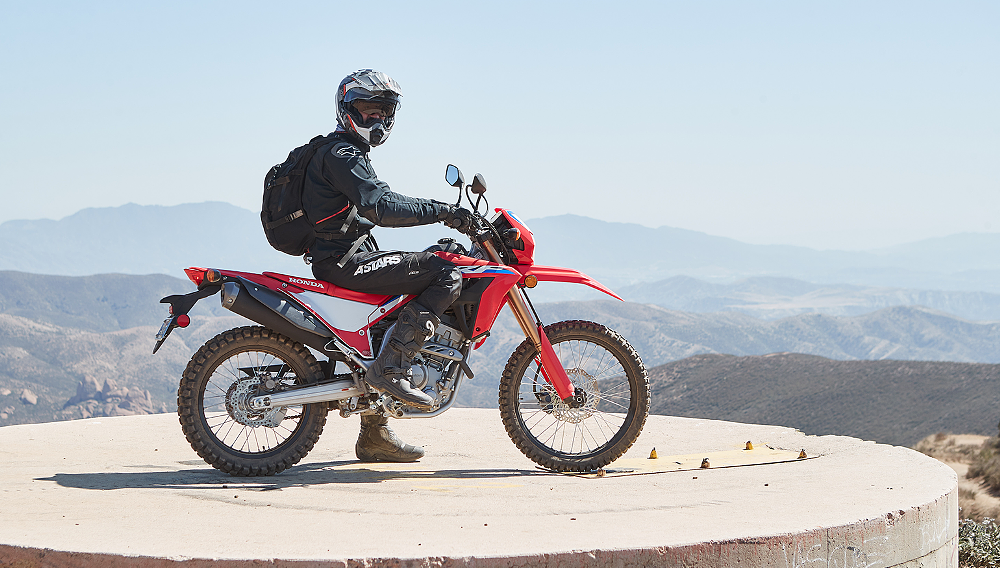
Final thoughts on the CRF300L
Critiques and all, it’s hard to look at the CRF300L as anything other than a success. The 250L was already a good bike and the 300 is better in many ways, worse in none. It’s also important to remember who and what this bike is designed for. It’s not a race bike, not an enduro bike, not an ADV, or a touring bike. It is, in the purest sense, a dual-sport — as capable in the dirt as it is on the street. And as incapable.
For a lot of riders, especially those that are new to life on two wheels, it’s an incredible package for just over $5,000. And with the bigger engine, I think it’s now a bike that people will be able to ride longer without feeling like they have to upgrade to something more powerful. So, no, it isn’t the elusive and mythical “perfect” dual-sport. It didn’t fix every single issue with the 250L. But, it’s a much improved machine. And it might be the perfect dual-sport for you.
| 2021 Honda CRF300L | Honda CRF300L Rally | |
|---|---|---|
| Price (MSRP) | $5,249 ($5,549 with ABS) | $5,999 ($6,299 with ABS) |
| Engine | 286 cc, liquid-cooled, four-valve, single cylinder | 286 cc, liquid-cooled, four-valve, single cylinder |
|
Transmission, final drive |
6-speed, chain | 6-speed, chain |
| Claimed horsepower | na | na |
| Claimed torque | na | na |
| Frame | Steel tube semi-double cradle | Steel tube semi-double cradle |
| Front suspension | Showa 43 mm fork; 10.2 inches of travel | Showa 43 mm fork; 10.2 inches of travel |
| Rear suspension | Showa shock, adjustable for spring preload, rebound damping; 10.2 inches of travel | Showa shock, adjustable for spring preload, rebound damping; 10.2 inches of travel |
| Front brake | Nissin two-piston caliper, 256 mm disc (ABS optional) | Nissin two-piston caliper, 256 mm disc (ABS optional) |
| Rear brake | Nissin single-piston caliper, 200 mm disc (ABS optional) | Nissin single-piston caliper, 200 mm disc (ABS optional) |
| Rake, trail | 27.3 degrees, 4.3 inches | 27.3 degrees, 4.3 inches |
| Wheelbase | 57.2 inches | 57.2 inches |
| Seat height | 34.7 inches | 35.2 inches |
| Fuel capacity | 2.1 gallons | 3.4 gallons |
| Tires | IRC Trails GP; 80/100-21 front, 120/80-18 rear | IRC Trails GP; 80/100-21 front, 120/80-18 rear |
| Claimed weight | 309 pounds (311 pounds with ABS) | 333 pounds (337 pounds with ABS) |
| Available | Now | Now |
| Warranty | 12 months, unlimited miles | 12 months, unlimited miles |
| More info | powersports.honda.com | powersports.honda.com |






